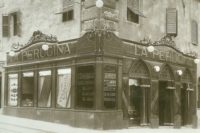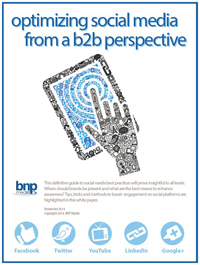A Sweet Trip Down Memory Lane
Confectioner is 90 years old with this issue! And it’s interesting
to note that although so many things have changed in the confectionery
industry, many things have stayed the same. We have every issue of Confectioner — it was
called the Northwestern Confectioner when it was launched in 1916 — and it’s an
interesting trip looking through old issues.
May 1916
The steadily advancing price of raw materials is
naturally the all absorbing topic of interest in the confectionery trade at
the present time. Sugar, cocoa beans, cocoa butter fruits, gums, nuts,
colors, boxes, even paper and twine, have been soaring to new high points
and yet the end does not seem to be in sight. The situation has created a
perplexing problem, especially for the manufacturer. He has been forced to
raise the price of his manufactured goods, but not in proportion to the
advance in raw materials, with the result that the margin of profits is
being cut into badly.
Such a large proportion of the raw materials used in
the manufacture of chocolate and confectionery is imported that it is
almost impossible to predict just what will be the outcome of the price
situation. Authorities in the trade, however, are inclined to the belief
that as long as the European war is on, even greater advances may be
expected. Some manufacturers are even going so far as to predict that 8, 81/2, or even 9-cent
sugar is a possibility during the next few months.
From the Northwestern
Confectioner - June 1916
The National Confectioners Association, at its recent
convention held in Detroit, on the recommendation of the resolutions
committee, voted to designate the second Saturday of October in each year
as Candy Day. This day falls on October 14 this year and every
manufacturer, retailer, jobber and salesman should unite in making the day
one of national significance.
On this occasion, members of the national association
are to induce retailers to install elaborate window displays and are to
prepare special advertising to stimulate the candy trade. “Apple
Day” has become nation-wide in observance and there is no reason why
“Candy Day” cannot be as widely observed.
And the first Candy Day was definitely a major success
according to the November 1916 issue of the Northwestern
Confectioner with glowing reports of
citywide activities in Cincinnati, Milwaukee, New York and Chicago. Walther
C. Hughes, secretary of the National Confectioners Association, reported,
“I have received from newspaper publishers all over the United
States, full-page display advertisements with special Candy Day headings
and borders, and a center Candy Day story, surrounded by the cards of local
manufacturing, wholesale and retail confections.”
Tag line for the year:
Are You Eating Enough Candy? The hunger for
sweets is natural. The normal man or woman who is not eating a reasonable
amount of candy daily is not being properly fed.
Hear, hear!








